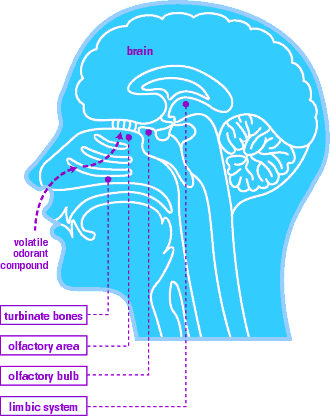



 The term 'electronic nose' has been coined for describing chemical sensing instruments that use an array of non-specific sensors coupled with some form of multivariate analysis or neural network to analyze the response patterns. Comparing the functions of the electronic nose with the biological smelling system it is easy to see the parallels and understand why the term "electronic nose" came into being. However this does give rise to the unfortunate conclusion that these machines can smell, potentially as well as humans or dogs, which is not the case. Here we'd like to explain biological smell in more detail. The term 'electronic nose' has been coined for describing chemical sensing instruments that use an array of non-specific sensors coupled with some form of multivariate analysis or neural network to analyze the response patterns. Comparing the functions of the electronic nose with the biological smelling system it is easy to see the parallels and understand why the term "electronic nose" came into being. However this does give rise to the unfortunate conclusion that these machines can smell, potentially as well as humans or dogs, which is not the case. Here we'd like to explain biological smell in more detail.
The cross section of a head shows the route of volatile odorant compounds into the olfactory area from the nose and the mouth. When you sniff currents of air swirl up over the turbinate bones and to a sheet called the olfactory epithelium. Our sense of taste is greatly influenced by our sense of smell, as shown the odor from our food is also brought into the olfactory epithelium. In an electronic nose it is not the act of sniffing or masticating that brings the odor into contact with the sensors but usually an electrical pump. The olfactory epithelium is small, approx. 1 square centimeter per nostril, and yet contains an estimated 50 million primary sensory cells in humans. Each of the sensory cells has miniscule filaments that extend from the surface of the epithelium into the watery mucus. Each filament contains a protein that is the molecular receptor that interacts with the incoming odorant molecules. Biological systems have thousands of non-specific chemical receptors that can respond to almost any combination of chemicals whereas electronic systems currently have tens of unique sensors. The exact nature of the interaction between receptor and odorant molecule is still being studied, for latest research please consult our olfaction links. It is known that not every receptor interacts with every odorant molecule. When an interaction does occur a sequence of events is initiated involving a rush of electrical activity in the brain. This is shown in the image by the flashing olfactory bulb and then sequentially the flashing brain. It is in the brain that the signals from the neurons in the nose are processed, decoded and the interpretation occurs. In the electronic nose the brain is the microprocessor programmed with algorithms to decode the pattern of response from the sensors. |